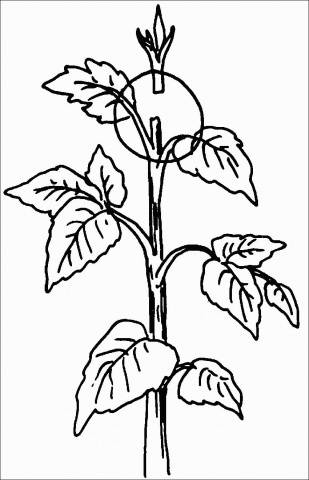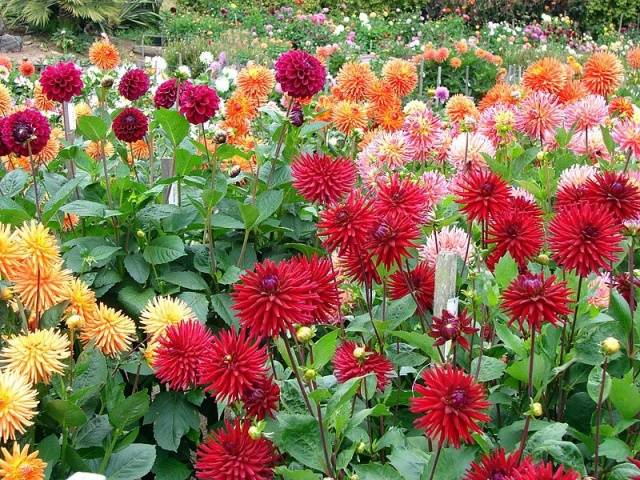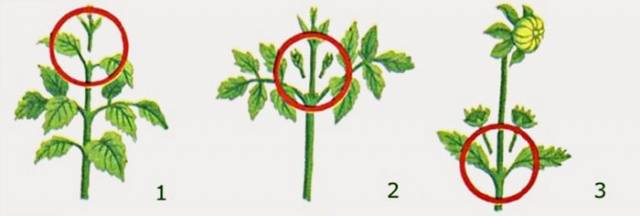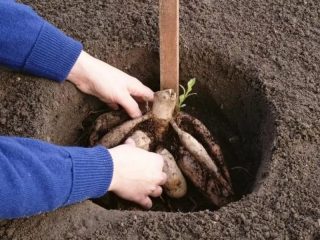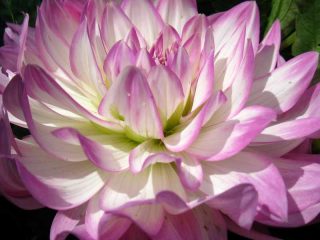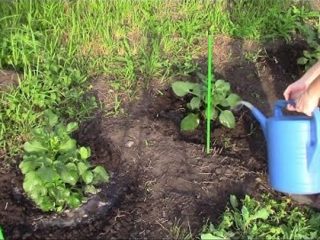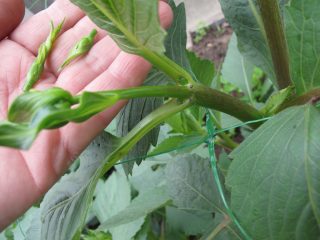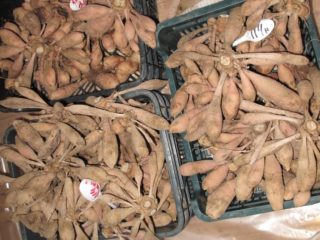Pinching and pinching a dahlia are ways to form a bush. Using these techniques, you can grow a lush, abundantly flowering bush or get a plant with one huge flower.
Bush formation methods
Topping
Pinching and pinching are used only for tall and medium-sized dahlias. Curb, small-flowered and pompom dahlias do not require formation, the shape of the bush is genetically incorporated.
The weather during pinching should be dry, it is advisable to pinch and pinch in the morning after the dew has dried. High humidity contributes to the development of pathogenic microflora. Since pinching implies a violation of the integrity of the shell, microorganisms easily penetrate into the plant.
Pinching helps:
- Get early flowering;
- Increase the size of the flowers;
- Save the plant's strength for tuber formation;
- Increase the decorative effect of the bushes.
Dahlias are pinched to stop the growth of the main stem and to stimulate the formation of additional branches. If you leave the bush without pinching, you get a trunk with three peduncles at the top. The plant will spend all its vitality on the growth of the main flower, the rest of the buds will most likely not be able to bloom.
After pinching the main stem, the lateral ones begin to develop. Each stem is capable of producing up to three large buds. First, the central bud blooms, then alternately the lateral ones. After pinching the bush grows sprawling, with a lot of flowers.
The pinching of the main stem is carried out after the appearance of the fourth pair of leaves. Part of the dahlia above the leaves is broken out or cut with a knife. It is advisable to carry out this procedure as early as possible in order to maintain the strength of the plant.
When the side branches grow, the procedure can be repeated. The most productive upper branches, the lower shoots are not left for flowering. Pinching is carried out after the formation of the second or third pair of leaves, when 3 - 4 lateral branches are formed on the stem, pinching is no longer carried out. All growing shoots must be removed as early as possible.
In addition to pinching the stems, pinching of the lower leaves, excess shoots from the tuber and buds is also used. The lower leaves are cut for hygienic purposes, the buds - to increase the decorative effect of the flower.
In dahlia bushes, all the lower leaves are removed to facilitate airing of the stems and prevent fungal infections. In this case, the root collar develops correctly, this contributes to better storage of tubers in winter.
Tall dahlias most often form 3 stems. There are much more sprouts on the tuber, the extra ones must be removed. They are usually cut as close to the tuber as possible. It is necessary to treat the cut with fungicides.
Excess buds are removed to obtain one large flower on an even stem. Such flowers are used for cutting, for drawing up bouquets, where the dahlia solo. Large flowers are also important for show pieces.
Stepping
Grasshopping is the removal of shoots growing from each pair of leaves. Leaving all the shoots on the bush will greatly weaken the plant. Flowering will come much later, most of the buds will not have time to bloom.Weakened dahlia tubers are poorly stored in winter.
Stepping into:
- Stimulates flowering;
- Promotes the accumulation of nutrients by the tuber;
- Improves the appearance of the plant.
Passionking is carried out selectively. Top shoots can be left on for longer flowering. It must be borne in mind that a large number of dahlia shoots will not be able to provide nutrients.
Lateral shoots grow quickly enough. As a rule, pinching is carried out 3-4 times a month, depending on the growth rate.
Having figured out how to form dahlias correctly, it is easy to grow a flower suitable for any purpose, which will bring real joy to its owner.
